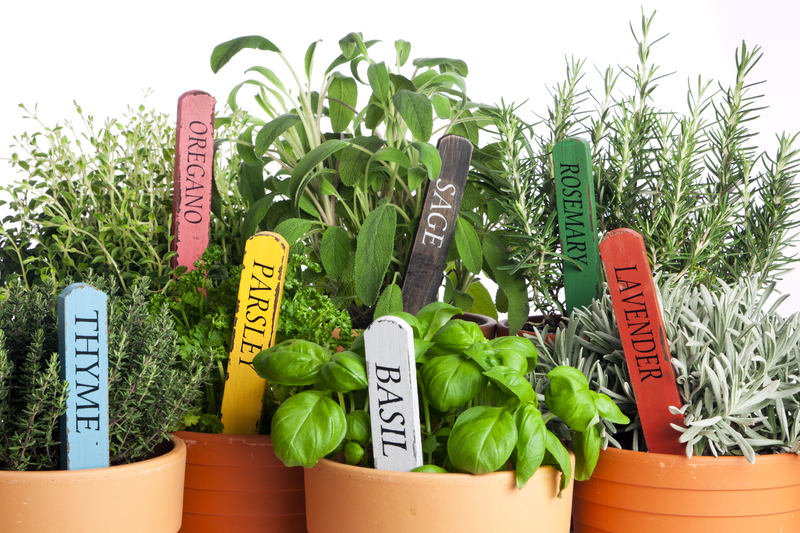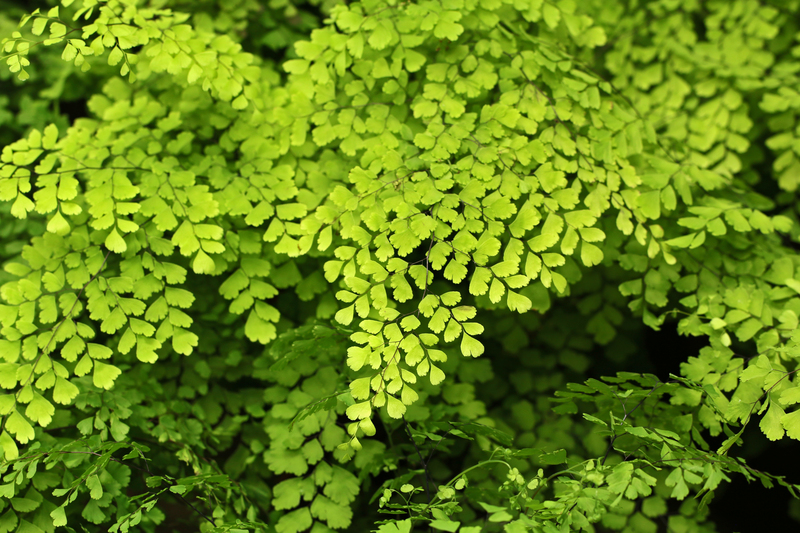Explore the world of lush vertical gardening
Posted on 02/09/2025
Explore the World of Lush Vertical Gardening
Have you ever daydreamed about turning a dull wall into a living masterpiece or using every inch of your available space to create a flourishing garden retreat? Vertical gardening makes these aspirations a reality. As urban environments grow and green spaces shrink, vertical gardening offers a lush, innovative way to infuse life into any environment. This comprehensive guide will cover what vertical gardening is, its benefits, popular systems, essential plant choices, design inspiration, sustainable solutions, and expert tips to create your own verdant sanctuary--skyward.
What Is Vertical Gardening?
Vertical gardening, sometimes referred to as green walls, living walls, or vertical planters, involves growing plants upwards using structures, supports, or containers attached to walls, fences, or other vertical surfaces. It's a perfect solution for maximizing green space in limited areas, both indoors and outdoors.
Key Elements of a Lush Vertical Garden
- Support Structure: Trellises, wall-mounted pockets, stacked planters, or hydroponic panels.
- Growing Medium: Soil-based, soilless, or hydroponic solutions tailored to plant needs.
- Plant Selection: Choosing appropriate species for local light, climate, and maintenance requirements.
- Irrigation: Automated drippers, self-watering pots, or manual systems for consistent moisture.
- Maintenance: Fertilization, pruning, pest monitoring, and seasonal plant replacements.
With the right combination of these elements, you can unlock the world of striking, low-maintenance vertical greenery.

Benefits of Vertical Gardening
- Maximizes Limited Space: Perfect for apartment balconies, patios, and compact yards--grow up, not out.
- Improves Air Quality: Plants naturally filter pollutants, resulting in fresher, cleaner air indoors and out.
- Provides Thermal Insulation: Living walls can cool buildings in summer and insulate against heat loss in winter, lowering energy bills.
- Enhances Aesthetics: Lush vertical gardens offer a breathtaking visual impact--turning any wall into a living work of art.
- Boosts Biodiversity: Attract pollinators like bees and butterflies, even in urban environments.
- Promotes Wellbeing: Numerous studies show exposure to greenery reduces stress and promotes a sense of calm and happiness.
Vertical gardens do more than beautify--they transform and heal the urban landscape.
Popular Types of Vertical Gardening Systems
There are myriad creative ways to develop a vertical garden, depending on space, budget, and intended use. Explore these vertical gardening systems to find what best suits your vision:
Pocket Planters
- Fabric Wall Pockets: Modular systems made from felt or recycled fibers that attach directly to walls. Each pocket holds soil and a plant, creating a quilt of living foliage.
- DIY Shoe Organizers: Repurpose over-the-door organizers--ideal for herbs and small annuals.
Pocket planters are easy to install, maintain, and swap for stunning seasonal displays.
Tiered and Stackable Containers
- Stacked Pots or Planters: Specially designed containers stack vertically, allowing for abundant growth within a tiny footprint.
- Pole-Mounted Systems: Multiple pots attached around a sturdy pole or column.
This style is ideal for patios and balconies, maximizing space and accessibility.
Trellises and Grids
- Metal or Wooden Trellises: Provide a climbing framework for vines, peas, beans, cucumbers, or flowering climbers like clematis.
- Wire Grids: Attach pots or let epiphytic plants (like air plants) anchor directly.
Trellises transform plain fences and walls into lush, vertical landscapes with minimal effort.
Modular Living Wall Panels
- Pre-Planted Panels: Mounted modules filled with growing medium and a carpet of plants, designed for fast installation and instant impact.
- Hydroponic Panels: Soilless, self-irrigating panels for cleaner, lighter, and low-maintenance walls--popular indoors or in commercial spaces.
Choose modular systems for large-scale projects and professional green walls with automated irrigation.
Gutter Gardens and Recycled Systems
- Upcycled Rain Gutters: Mount horizontally or diagonally to create rows for lettuce, strawberries, or cascading flowers.
- Pallet Gardens: Attach landscape fabric to the back and fill with soil, planting between slats for a rustic-chic look.
Recycled systems are eco-friendly and budget-conscious solutions that add rustic charm and sustainability.
Choosing the Best Plants for Vertical Gardens
Plant selection is pivotal for success in vertical gardening. Carefully consider the location's available sunlight, climate, wind exposure, and desired maintenance level.
Top Plant Choices for Lush Vertical Gardens
- Ferns & Mosses: Moisture-loving, shade-tolerant, and visually soft--perfect for indoor or shaded outdoor walls.
- Trailing and Cascading Plants: Pothos, Philodendron, English Ivy, String of Pearls--create dramatic waterfalls of greenery.
- Herbs and Edibles: Basil, Thyme, Mint, Parsley, Lettuce, Strawberries, Peppers, Cherry Tomatoes--homegrown flavor within arm's reach.
- Sedums and Succulents: Low-water, sun-tolerant, and sculptural--excellent for south-facing walls or dry climates.
- Flowering Annuals & Perennials: Petunias, Nasturtiums, Begonias, Violets, Campanula--add vibrant color and attract pollinators.
Tip: Group plants with similar watering and light needs to simplify care and keep your vertical garden thriving.
Design Inspiration: Vertical Gardening Ideas for Every Space
From minimalist to lush and tropical, vertical gardening designs can suit any aesthetic. Discover these creative ideas for integrating "vertical" greenery:
- Indoor Living Walls: Transform your living room or entryway with a statement piece--go for all ferns for a woodland vibe, or mix foliage with bursts of color.
- Balcony Edible Garden: Spice up meals by growing fresh herbs and salad greens vertically--compact, fragrant, and endlessly convenient.
- Flower Wall for Privacy: Shield your patio or deck from view using a lattice covered in climbing flowers and dense foliage.
- Rain Chain Planters: Suspend small pots from a chain in a cascade; ideal for cascading succulents or air plants.
- Outdoor Art Installation: Use modular panels to create intricate patterns or living mosaics on large exterior walls of homes or businesses.
- Children's Garden Wall: Install brightly colored pockets at kid-height--let children plant and harvest their own edible treats.
Let your creativity shine and turn any vertical surface into a garden adventure.
Vertical Gardening and Sustainability
Lush vertical gardening isn't just about beauty--it's an eco-friendly, sustainable practice that benefits both people and the planet. Here's how:
- Urban Heat Island Mitigation: Green walls reduce local ambient temperatures in cities, cutting the need for air-conditioning and combating climate change.
- Stormwater Management: Vertical gardens absorb rain and reduce runoff, easing pressure on city drainage systems.
- Recycled Materials: Many vertical garden systems use upcycled plastics, fabrics, or pallets--reducing landfill waste.
- Improved Urban Biodiversity: Vertical ecosystems provide habitat for insects and birds in concrete-dominated places.
- Efficient Water Use: Drip irrigation and hydroponic systems minimize water waste compared to traditional gardens.
Opting for vertical greenery is a step towards a cleaner, greener, and more resilient planet.
Step-by-Step Guide: How to Start Your Own Lush Vertical Garden
Ready to transform your home or office with vertical gardening? Follow these actionable steps for success:
1. Plan Your Space and Purpose
- Assess: Available wall/fence size, sunlight, access to water, and weight capacity.
- Decide: Is your goal ornamental, edible, or a combination? Will it be indoors or outdoors?
2. Choose a Vertical Gardening System
- For renters: Opt for lightweight, easily removable setups like pocket planters or stacked pots.
- Permanent installations: Modular panels or custom trellises are ideal for long-term growth and greater scale.
3. Select Appropriate Plants
- Match plants to light conditions (full sun, partial, or shade) and watering needs.
- Consider root depth--shallow-rooted plants fare better in wall systems.
- Group species by similar requirements to simplify ongoing care.
4. Prepare and Install Growing Medium
- Choose moisture-retentive, lightweight soil mixes or appropriate hydroponic media.
- Fill containers, ensuring excellent drainage to prevent root rot.
5. Install Irrigation and Water
- For large or complex systems, drip irrigation is nearly essential--reducing workload and preventing drought stress.
- For smaller walls, hand-water regularly and check soil moisture frequently.
6. Plant, Arrange, and Maintain
- Start with healthiest, pest-free plants.
- Arrange visually--group by size, color, and texture for maximum impact.
- Prune and fertilize as needed; replace failed plants promptly.
Create, nurture, and enjoy your lush vertical oasis--no matter how much (or little) horizontal space you have.
Expert Tips for Thriving Vertical Gardens
- Start Small: Begin with a compact system to master care routines before expanding.
- Monitor Moisture Closely: Vertical gardens can dry faster--consistent watering is key, especially for sun-exposed walls.
- Rotate Plants (Indoors): Certain plants may need to rotate or swap locations to ensure even growth and adequate light.
- Fertilize Regularly: Wall gardens can leach nutrients quickly--use balanced liquid feeds every few weeks.
- Invest in Quality Materials: Sturdy supports are vital for safety and long-lasting displays.
- Encourage Biodiversity: Integrate a mix of flowers, edibles, and pollinator-attracting species.
- Watch for Pests: Keep an eye out; humidity and plant proximity can sometimes encourage outbreaks. Use organic controls when needed.

Vertical Gardening Trends: What's New in 2024?
As eco-consciousness and urbanization accelerate, vertical gardening is evolving with innovative trends:
- Smart Living Walls: Automated lighting, irrigation, and nutrient dosing controlled via smartphone apps.
- Edible Wall Farms: Hydroponic systems for growing high-yield greens and herbs indoors year-round.
- Biophilic Design Integration: Merging vertical gardens with workplace architecture for enhanced creativity and wellbeing.
- Air Purifying Green Walls: Walls designed to target specific indoor pollutants using high-oxygen-producing plants.
- DIY Upcycling: More home gardeners are building vertical gardens from repurposed and reclaimed materials for unique, eco-chic statements.
Conclusion: Reach New Heights with Vertical Gardening
Vertical gardening is more than a trend--it's a pathway to healthier living, creative expression, and environmental stewardship. Whether you aim to harvest homegrown herbs, beautify a drab space, or revitalize your corporate office, the world of lush vertical gardening offers solutions for every situation. With thoughtful planning, resilient plant choices, and a spirit of experimentation, you'll unlock endless possibilities--turning blank walls into breathtaking, living tapestries.
It's time to explore the lush world of vertical gardens--start dreaming, growing, and greening your space vertically today!

